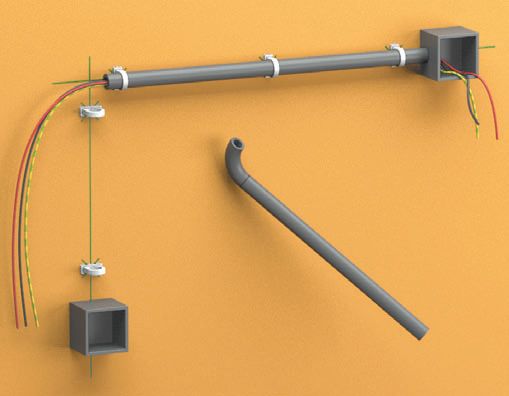Corrugated pipe is usually used in non-residential utility rooms (such as an attic) because the pipe is not aesthetically pleasing. Most often, a corrugated pipe is used for wiring from a switchboard to apartments. For a private house, a corrugated pipe is used as protection for cables and wires going through an overhead power line to the house. However, there is an option with colored corrugation, which is quite suitable for wiring indoors.
A small diagram of wiring in a corrugated pipe
The beginning of the installation of the corrugations is the drawing up of a drawing diagram. Remember, pipes cannot be crossed with each other. Firstly, it is not aesthetically pleasing, and secondly, it is contrary to safety requirements. Therefore, first carefully draw a diagram of the entire piping of future wiring, excluding intersections with each other. After the drawing is drawn up, we proceed to the purchase of all material and accessories, the required amount of corrugated pipe. Let's start marking.
The diameter of the corrugated pipe must be determined correctly, for this we take the entire number of wires that will need to be carried inside the pipe and check on a piece of pipe so that they all fit. The void must be at least half the internal volume of the corrugated pipe, otherwise it will be difficult or even impossible to pull the wires.
How to thread wiring into a corrugated pipe
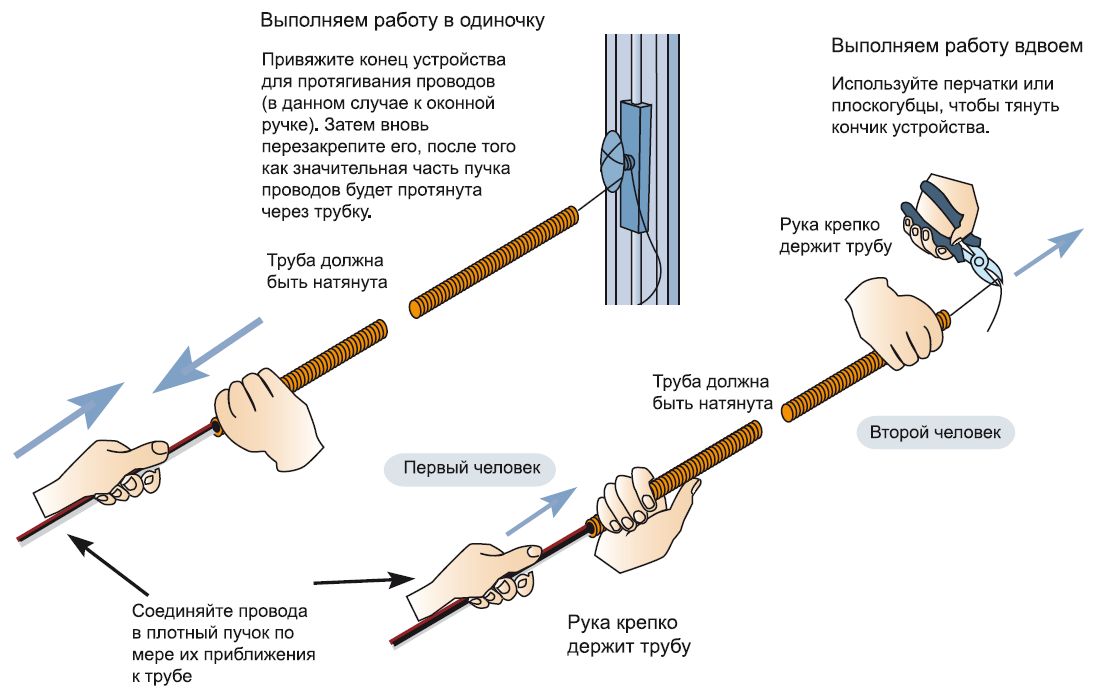
Corrugations come with a probe and without it. If there are small areas, you can use a corrugation without a probe. If the length of the wire to be threaded into the corrugation is very long, then the corrugation is needed with a probe wire.
How is the wire drawn.
We tie the end of the cable to the end of the probe wire, the pipe is tightly wrapped around the hand. Behind the other end of the wire, the wire is pulled through the corrugation. Several cables must be tied at the same time, while the pulling pipe must be straightened. Marking is done and points are marked for drilling holes for corrugation fasteners. Often, in the open method of laying a corrugated pipe, plastic clips are used, which are fixed to the ceiling and walls with the help of dowels, nails, screws.
With a corrugated pipe diameter of 16 mm, fasteners are placed at a distance of 30–40 cm. A corrugation with a diameter of 32, 40 mm requires the location of clips with a distance of 20–30 cm from each other. Then all the holes are drilled, a plastic dowel is inserted into them and screws are screwed in that press the clips. Next, the corrugation with wires is inserted into the clip. To disconnect the corrugation, simply pull the pipe towards you.
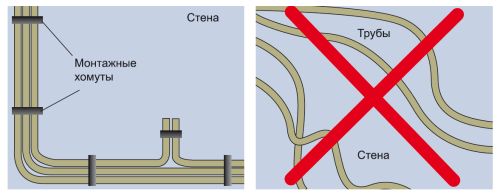
There are fastening options with a metal bracket and a retractable clamp. If the appearance of the pipe does not matter, you can use a tightening clamp, this option is also convenient if installation needs to be done quickly. With one clamp, fastened with a dowel-nail, a screw, it is possible to connect several corrugations that are tightened with a clamp.
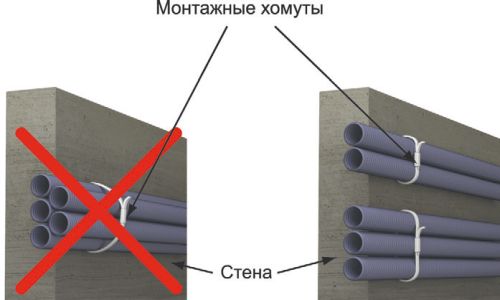
metal hose in living rooms it is not used, they are located only in technical rooms. The metal hose is mainly used when laying information cables (Internet, TV cables). thus, the metal hose acts as a screen for external electromagnetic radiation, the pipe must be grounded.
PVC pipes mounted in the same way as corrugated ones. They are used in utility and non-residential premises where additional mechanical protection is required for wiring. Clips or other type of fastening can be placed less often than in the case of a corrugated pipe, since PVC pipes keep their size well and do not bend.
Step 1. The marking of the wall is done with the help of a beating - a colored thread.
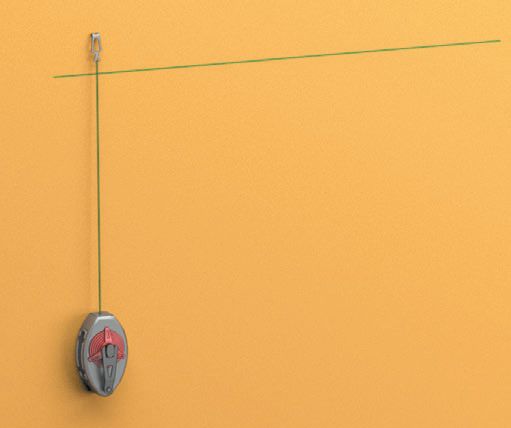
Step 2 Installation of installation and soldering boxes.
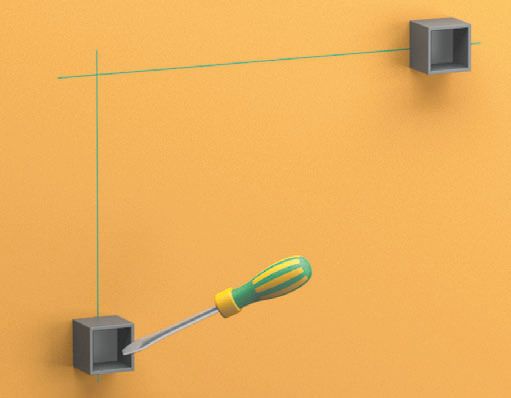
Step 3 The places for attaching clips for future pipe laying are marked.
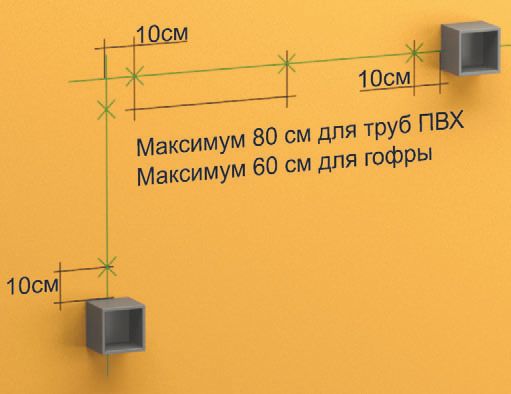
Step 4 Clip installation.
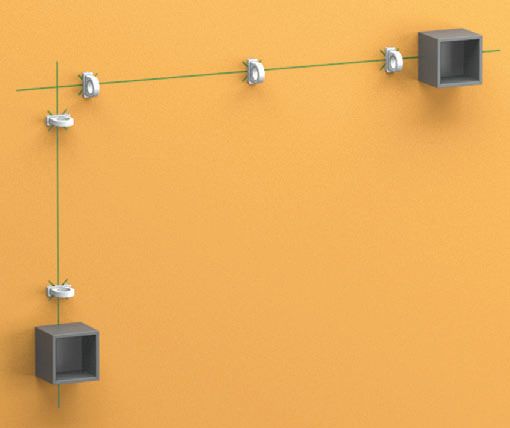
Step 5 The pipes are cut into several pieces of the required length, and then strengthened into clips, adjusting the dimensions of the accessories.
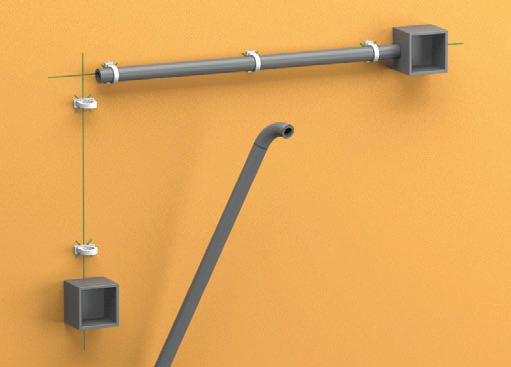
Step 6 The wire is pulled through the pipes and finally installed.
